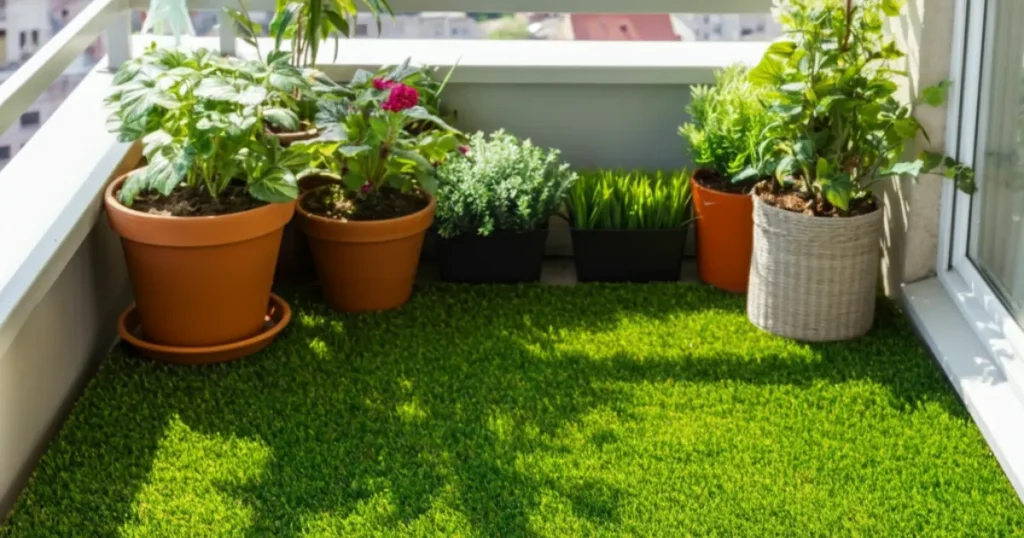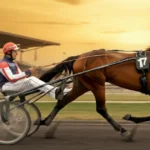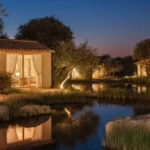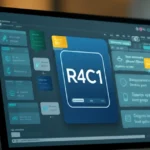Looking for a way to keep your outdoor or indoor spaces green and pristine—without the hours of maintenance? Mini turf might just be the perfect solution. This compact synthetic grass is not only stylish and practical but also eco-friendly, making it a popular choice for modern homes and urban spaces.
This post explores everything you need to know about mini turf, from its benefits and applications to DIY installation tips and cost analysis. By the end, you’ll see why this artificial greenery is paving the way for hassle-free, beautiful spaces at a fraction of the effort.
What Is Mini Turf — And Why Is It Gaining Popularity?
Mini turf is a type of artificial grass designed for small spaces, offering the look and feel of a natural lawn without the upkeep. Unlike traditional sod, it requires no mowing, fertilizing, or watering, making it ideal for anyone aiming to cut down on yard work and move toward sustainable living.
With urbanization on the rise, mini turf has become increasingly popular for compact outdoor areas, apartments with balconies, and even indoor designs. From homeowners seeking to reconnect with nature in cityscapes to businesses wanting a polished, evergreen touch, mini turf is becoming a go-to option.
The Benefits of Mini Turf
Why are so many people making the switch to mini turf? Here are a few key benefits:
1. Low Maintenance
Traditional grass lawns require mowing, watering, fertilizing, and pest control to stay in good shape. Mini turf, on the other hand, eliminates these labor-intensive tasks. It comes prepped for a lush look year-round with only occasional cleaning required to maintain its appearance.
2. Water Conservation
Did you know the average US household uses about 30% of its water on outdoor irrigation? Mini turf eliminates the need for constant watering, significantly reducing your water usage and, in turn, cutting down your utility bills. It’s an eco-friendly solution that helps conserve one of the planet’s most precious resources.
3. Aesthetic Appeal
Mini turf offers a consistent, vibrant green that mimics the look of natural grass. Whether in shaded areas where real grass struggles to thrive or in spaces that need an extra touch of greenery, mini turf enhances nearly any environment. Bonus points for it being perfect for pet- and child-friendly play zones!
4. Durability and Longevity
Mini turf is designed to withstand the elements, heavy foot traffic, and playful pets without wear and tear. Unlike grass that’s prone to patches or browning during extreme weather, mini turf stays flawlessly green.
Creative Applications of Mini Turf
Mini turf’s versatility ensures it works almost anywhere. Here are some innovative applications to inspire you:
Small Yards
Mini turf is perfect for small backyards or urban gardens where traditional grass might be impractical. Combine it with potted plants and seating for a relaxing oasis.
Balconies
Give your apartment balcony a natural makeover by rolling out mini turf. It creates a cozy environment, perfect for relaxing or hosting small gatherings.
Indoor Spaces
Need greenery inside your home? Mini turf works well in playrooms, home gyms, or even as decorative accents along walls. It offers a touch of nature without the temperature or light requirements of natural grass.
Rooftop Gardens
Transform your rooftop into a lush sanctuary using mini turf, complete with lounge seating and creative landscaping. It’s a low-weight, low-maintenance solution for elevated green spaces.
Commercial Spaces
Businesses like cafes and boutique hotels are increasingly using mini turf for aesthetic appeal. It adds a fresh, welcoming vibe to patios, outdoor seating areas, or shop entrances.
DIY Mini Turf Installation Guide
Installing mini turf might seem daunting, but with this step-by-step guide, you can handle it yourself:
Looking for a way to keep your outdoor or indoor spaces green and pristine—without the hours of maintenance? Mini turf might just be the perfect solution. This compact synthetic grass is not only stylish and practical but also eco-friendly, making it a popular choice for modern homes and urban spaces.
This post explores everything you need to know about mini turf, from its benefits and applications to DIY installation tips and cost analysis. By the end, you’ll see why this artificial greenery is paving the way for hassle-free, beautiful spaces at a fraction of the effort.
What Is Mini Turf — And Why Is It Gaining Popularity?
Mini turf is a type of artificial grass designed for small spaces, offering the look and feel of a natural lawn without the upkeep. Unlike traditional sod, it requires no mowing, fertilizing, or watering, making it ideal for anyone aiming to cut down on yard work and move toward sustainable living.
With urbanization on the rise, mini turf has become increasingly popular for compact outdoor areas, apartments with balconies, and even indoor designs. From homeowners seeking to reconnect with nature in cityscapes to businesses wanting a polished, evergreen touch, mini turf is becoming a go-to option.
The Benefits of Mini Turf
Why are so many people making the switch to mini turf? Here are a few key benefits:
1. Low Maintenance
Traditional grass lawns require mowing, watering, fertilizing, and pest control to stay in good shape. Mini turf, on the other hand, eliminates these labor-intensive tasks. It comes prepped for a lush look year-round with only occasional cleaning required to maintain its appearance.
2. Water Conservation
Did you know the average US household uses about 30% of its water on outdoor irrigation? Mini turf eliminates the need for constant watering, significantly reducing your water usage and, in turn, cutting down your utility bills. It’s an eco-friendly solution that helps conserve one of the planet’s most precious resources.
3. Aesthetic Appeal
Mini turf offers a consistent, vibrant green that mimics the look of natural grass. Whether in shaded areas where real grass struggles to thrive or in spaces that need an extra touch of greenery, mini turf enhances nearly any environment. Bonus points for it being perfect for pet- and child-friendly play zones!
4. Durability and Longevity
Mini turf is designed to withstand the elements, heavy foot traffic, and playful pets without wear and tear. Unlike grass that’s prone to patches or browning during extreme weather, mini turf stays flawlessly green.
Creative Applications of Mini Turf
Mini turf’s versatility ensures it works almost anywhere. Here are some innovative applications to inspire you:
Small Yards
Mini turf is perfect for small backyards or urban gardens where traditional grass might be impractical. Combine it with potted plants and seating for a relaxing oasis.
Balconies
Give your apartment balcony a natural makeover by rolling out mini turf. It creates a cozy environment, perfect for relaxing or hosting small gatherings.
Indoor Spaces
Need greenery inside your home? Mini turf works well in playrooms, home gyms, or even as decorative accents along walls. It offers a touch of nature without the temperature or light requirements of natural grass.
Rooftop Gardens
Transform your rooftop into a lush sanctuary using mini turf, complete with lounge seating and creative landscaping. It’s a low-weight, low-maintenance solution for elevated green spaces.
Commercial Spaces
Businesses like cafes and boutique hotels are increasingly using mini turf for aesthetic appeal. It adds a fresh, welcoming vibe to patios, outdoor seating areas, or shop entrances.
DIY Mini Turf Installation Guide
Installing mini turf might seem daunting, but with this step-by-step guide, you can handle it yourself:
Step 1: Prepare the Space
- Clear the area of existing grass, plants, or debris.
- Ensure that the ground is level and compacted. Fill in low spots with sand or gravel to create a smooth base.
Step 2: Lay a Weed Barrier
- Roll out a weed control fabric over the area. This will prevent weeds from growing through the mini turf.
Step 3: Cut the Turf to Fit
- Measure and cut the mini turf to fit the space. Leave an extra inch around the edges for adjustments.
Step 4: Secure the Edges
- Use stakes, adhesive strips, or nails to secure the edges of the turf, ensuring it won’t shift over time.
Step 5: Add Sand or Rubber Infills
- Spread a thin layer of sand or rubber infill on top of the turf. Brush the infill into the fibers using a stiff broom to maintain the grass’s upright position and give it a realistic look.
Step 6: Final Touches
- Trim any excess turf and ensure all seams are aligned. Brush the turf again for a polished finish!
Simple Maintenance Tips for Mini Turf
While mini turf is low maintenance, keeping it looking its best requires occasional care:
- Clean Regularly: Remove leaves, twigs, and debris with a leaf blower or broom.
- Wash Away Stains: Use water and mild soap to clean spills or stains.
- Brush the Fibers: Brush the turf periodically to keep the fibers upright for a realistic appearance.
- Check for Wear: Inspect edges and infills for any adjustments needed.
Cost Analysis of Mini Turf vs. Natural Grass
Initial Installation Costs
- Mini Turf: Costs typically range from $5 to $20 per square foot, depending on quality and installation. DIY installation can reduce costs significantly.
- Natural Grass: Installing sod generally costs $1 to $3 per square foot, but you’ll need additional tools, like sprinklers and fertilizers.
Maintenance Costs
- Mini Turf: Requires almost no ongoing costs aside from occasional cleaning.
- Natural Grass: Lawn care, water bills, fertilizers, and equipment can cost upwards of $500 per year.
Long-term Savings
When comparing costs over 10 years, mini turf often comes out less expensive due to its minimal upkeep and water needs. Though the initial investment is higher, it pays off in long-term savings—both financial and environmental.
Bring the Perfect Green Home Today
Mini turf is proving to be an excellent alternative to traditional lawns—ideal for small spaces, eco-friendly, and endlessly versatile. Whether you’re dreaming of a lush balcony garden or seeking a practical, low-maintenance solution for your backyard, mini turf is worth considering.
Get started today with your mini turf project and enjoy lush greenery without the hassle. If you’re looking for the best-quality mini turf, browse our [recommended suppliers] and make the first step toward enhancing your space.
- Clear the area of existing grass, plants, or debris.
- Ensure that the ground is level and compacted. Fill in low spots with sand or gravel to create a smooth base.
Step 2: Lay a Weed Barrier
- Roll out a weed control fabric over the area. This will prevent weeds from growing through the mini turf.
Step 3: Cut the Turf to Fit
- Measure and cut the mini turf to fit the space. Leave an extra inch around the edges for adjustments.
Step 4: Secure the Edges
- Use stakes, adhesive strips, or nails to secure the edges of the turf, ensuring it won’t shift over time.
Step 5: Add Sand or Rubber Infills
- Spread a thin layer of sand or rubber infill on top of the turf. Brush the infill into the fibers using a stiff broom to maintain the grass’s upright position and give it a realistic look.
Step 6: Final Touches
- Trim any excess turf and ensure all seams are aligned. Brush the turf again for a polished finish!
Simple Maintenance Tips for Mini Turf
While mini turf is low maintenance, keeping it looking its best requires occasional care:
- Clean Regularly: Remove leaves, twigs, and debris with a leaf blower or broom.
- Wash Away Stains: Use water and mild soap to clean spills or stains.
- Brush the Fibers: Brush the turf periodically to keep the fibers upright for a realistic appearance.
- Check for Wear: Inspect edges and infills for any adjustments needed.
Cost Analysis of Mini Turf vs. Natural Grass
Initial Installation Costs
- Mini Turf: Costs typically range from $5 to $20 per square foot, depending on quality and installation. DIY installation can reduce costs significantly.
- Natural Grass: Installing sod generally costs $1 to $3 per square foot, but you’ll need additional tools, like sprinklers and fertilizers.
Maintenance Costs
- Mini Turf: Requires almost no ongoing costs aside from occasional cleaning.
- Natural Grass: Lawn care, water bills, fertilizers, and equipment can cost upwards of $500 per year.
Long-term Savings
When comparing costs over 10 years, mini turf often comes out less expensive due to its minimal upkeep and water needs. Though the initial investment is higher, it pays off in long-term savings—both financial and environmental.
Bring the Perfect Green Home Today
Mini turf is proving to be an excellent alternative to traditional lawns—ideal for small spaces, eco-friendly, and endlessly versatile. Whether you’re dreaming of a lush balcony garden or seeking a practical, low-maintenance solution for your backyard, mini turf is worth considering.
Get started today with your mini turf project and enjoy lush greenery without the hassle. If you’re looking for the best-quality mini turf, browse our [recommended suppliers] and make the first step toward enhancing your space.







